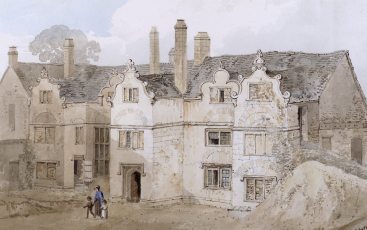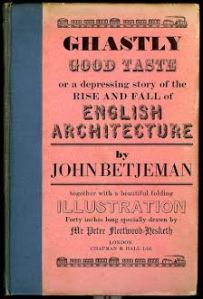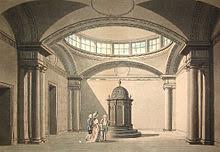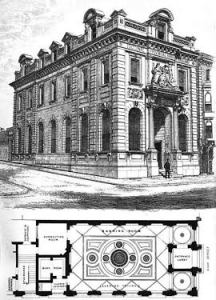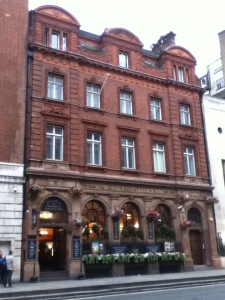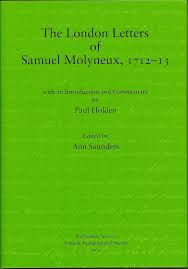 Samuel Molyneux was born in Chester on 18 July 1689. He was the third and only surviving child of the celebrated astronomer, antiquarian, philosopher and constitutional writer William Molyneux (1656-98) and his wife, Lucy who died when Samuel was only two. William studied at Middle Temple between 1675 and 1678 and once back in Dublin, in 1683, he founded with Sir William Petty the ‘Dublin Philosophical Society for the Improvement of Natural Knowledge, Mathematics and Mechanics’. He was elected a Fellow of the Royal Society in 1685. Through his scientific and published research William attracted friendships with Royal Society notables such as Robert Boyle, Edmond Halley, Robert Hooke, John Locke and Isaac Newton. William and his circle were huge influences on the infant Samuel however, William died aged 42 in 1698 when his only son was 9 years old. Samuel was raised in Dublin by his uncle Thomas Molyneux (1661-1733) who, like his brother William, had studied at Trinity College, Dublin, travelled abroad and was elected a Fellow of the Royal Society.. Thomas later forged a successful career as a physician, being elected a Fellow of the Irish College of Physicians, of which he was elected President in 1713, and later served as Regius Professor of Physic in 1717.
Samuel Molyneux was born in Chester on 18 July 1689. He was the third and only surviving child of the celebrated astronomer, antiquarian, philosopher and constitutional writer William Molyneux (1656-98) and his wife, Lucy who died when Samuel was only two. William studied at Middle Temple between 1675 and 1678 and once back in Dublin, in 1683, he founded with Sir William Petty the ‘Dublin Philosophical Society for the Improvement of Natural Knowledge, Mathematics and Mechanics’. He was elected a Fellow of the Royal Society in 1685. Through his scientific and published research William attracted friendships with Royal Society notables such as Robert Boyle, Edmond Halley, Robert Hooke, John Locke and Isaac Newton. William and his circle were huge influences on the infant Samuel however, William died aged 42 in 1698 when his only son was 9 years old. Samuel was raised in Dublin by his uncle Thomas Molyneux (1661-1733) who, like his brother William, had studied at Trinity College, Dublin, travelled abroad and was elected a Fellow of the Royal Society.. Thomas later forged a successful career as a physician, being elected a Fellow of the Irish College of Physicians, of which he was elected President in 1713, and later served as Regius Professor of Physic in 1717.
Thomas provided his nephew with a first-class education at Trinity College where he was tutored by George Berkeley who dedicated his 1707 book Miscellanea Mathematica (1707) to his pupil. Molyneux travelled extensively throughout Ireland and became secretary of the Dublin Philosophical Society where he published his research. Within the society he benefited from the social and intellectual freedom of membership taking great pains to build close links with his father’s friends, including the Astronomer Royal, John Flamsteed; ‘Operator’ to the Royal Society, Francis Hauksbee the younger; Secretary of the Royal Society, Dr Hans Sloane and distinguished men in Irish society such as William King, Archbishop of Dublin (1650-1729) and Andrew Fountaine (1676-1753), both of whom later supported Molyneux in England – King with gainful employment as a book-buyer and Fountaine with letters of introduction.
There is no evidence to suggest that Molyneux either personally met or privately corresponded with Sir Isaac Newton, President of the Royal Society, before 1712 so Newton’s patronage in being Molyneux’s nomination for a Fellowship of the Royal Society must have, at least in part, been based on the Irishman’s elevated reputation.
In October 1712 Samuel Molyneux travelled from his native Dublin to London in the hope of bolstering his standing as an elected Fellow of the Royal Society. When he arrived it is clear that he already held a respectable reputation based on his family pedigree, excellent education and grounding in family’s interests of antiquarianism, astronomy, history, natural philosophy and empirical science. On 30 October 1712 the Royal Society’s council minutes recorded the attendance of Samuel Molyneux ‘at his request’ to a scientific meeting at the Royal Society while on 4 November Molyneux, along with the Swiss mathematician Jean Bernoulli and the unknown Mr Turner were Balloted to for to be (sic) proposed to be Elected Members of the Society: Mr Bernoulli and Mr Molyneux were approved of, and Mr Turner was disapproved’. Two days later Molyneux was again at the Society this time he addressed the meeting giving descriptions of cross-bills, as seen in the north of Ireland, and of Irish marble, noting that ‘the best marble came from the County of Kerry, that the white marble turns yellow, and that the Irish marble was brittle and full of cracks’. The Journal book entry for 1 December 1712 records the election of Molyneux, Bernoulli, William Tempest (1682-1761), for 50 years a chief clerk at the Court of Common Pleas, the botanist Dr Patrick Blair (fl.1708-1728) and the well published botanist Richard Bradley (1688-1732) Mr Bradley were Proposed, Ballotted for, and Chosen Members of the Society’
Molyneux’s admission to the Royal Society coincided with a series of letters written to his learned uncle in Dublin. Copies of these seven letters, contained within a folio notebook, now deposited in Southampton City Archives, trace his six month tour of London, Oxford and Cambridge taken between October 1712 and April 1713. These letters have recently been published for the first time in their entirety by the London Topographical Society. As a social commentator his work sits confidently alongside other contemporary tourists, such as, Zacharias Conrad von Uffenbach (1710), Daniel Defoe (1724), César de Saussure (1725-30), Don Manoel Gonzales (1731) and John Loveday (principally 1730). Unfortunately the manuscript is not complete which may well explain why details of his election into the Royal Society are not mentioned. However, on 20 December 1712 he described a visit to the society’s new premises at Crane Court in Fleet Street where he met Francis Hauksbee whose final appearance at the Royal Society was in January 1713, shortly before his death in April. Curiously Molyneux does not discuss his host’s pioneering research on capillarity but does show an interest in his expertise in the manufacture of air pumps of which he was the designer of six known types. He also reports briefly on a pasteboard experiment, presumably one prepared by Hauksbee as ‘demonstrator or curator of experiments’ for a public lecture at the society. Such experiments were indicative of the revisions that Newton was making in advance of the second English edition of his book Opticks which was not republished until 1717.
As soon as Molyneux arrived in the capital he engaged on an erudite programme of edification and self-improvement by visiting some of the finest collections in the City before moving onto Oxford and Cambridge. Such collections were symbolic of the shift in English intellectualism towards an insatiable appetite to challenge established beliefs through the application of logic and experimentation. Many of the connoisseurs and collectors were held in high regard as experts in their fields, likewise many were Fellows of the Royal Society. Unfortunately, because of the missing folios in the manuscript there are no first hand descriptions of his known meetings with Fellows Hans Sloane (1660-1753) and Edmond Halley (1656-1742). However first-hand descriptions of other scientific collections are plentiful including the botany and entomology collections of James Petiver (c.1665-1718) housed in his apothecary shop in Aldersgate Street, and the collections of rarities amassed by Elias Ashmole (1617-92) housed at the Ashmolean museum in Oxford.
One of Molyneux’s personal highlights was in February 1713 when he visited Dr John Woodward (1665-1728) to view his geological collections which he clearly felt represented a shrine to learning. Between 1688 and 1724 Woodward, Professor of Physic at Gresham College in London, amassed some 9,400 scientific specimens in his college rooms which were painstakingly classified and documented. From this collection he formulated intellectual theories, such as An Essay towards a Natural History of the Earth (1695), in which he debated (and later fiercely defended) the notion that Noah’s flood disturbed the earth’s strata and re-deposited it according to the specific gravity of materials. This, according to Woodward, explained the origins of fossils then one of the most contentious aspects of natural philosophy. Of this theory Molyneux wrote ‘The Doctor however is so well pleas’d with being sure he is in the right that it were a Cruelty if it had not been an impossibility to convince him of the contrary’. Despite Woodward’s idiosyncratic charm, Molyneux appeared well aware of his repute as a sceptical theorist and volatile character − indeed, in defence of his academic ideologies he faked the discovery of a Roman shield and reputedly participated in a sword fight − he was later expelled from the Royal Society. Yet, Molyneux’s admiration of the doctor’s collection was boundless and in his letter home he provided his uncle with a comprehensive account of the British and foreign archaeological artefacts, fossils, minerals and rocks on show. Like Molyneux, Woodward too ended up the butt of the satirist’s pen for unprofessional conduct and flawed learning.
In the letter dated 18 February 1713 he visited Greenwich Observatory and his father’s former friend, the quarrelsome, uncompromising and strong-minded, John Flamsteed (16461719). Appointed in 1675 by Charles II as the first ‘Astronomical Observator’, the dour and perpetually poorly Flamsteed lived in a grace-and-favour house at the Royal Observatory at Greenwich. Despite a previous disagreement with his old friend William Molyneux over the latter’s book Dioptrica Nova − an argument that prompted Molyneux to describe Flamsteed as ‘a man of so much ill-nature and irreligion’ − Flamsteed received the young Molyneux cordially. At the time of Molyneux’s visit, Flamsteed was at the centre of a reputation crisis himself. Being such a perfectionist and protective of his observational research, conducted between 1676 and 1705 when Astronomer Royal, he refused to disseminate his research to a wider audience. In 1709 Queen Anne appointed a Board of Visitors to investigate his reluctance, as a result the Royal Society ended his exemption from dues and on 9 November 1709 used non-payment as an excuse to expel him. Worse was to follow when in 1712 Royal Society notables Newton and Halley forced the publication of his observations in a private edition entitled Historiae coelestis. Flamsteed was so enraged by Halley’s abridgement and unauthorised additions to the text that by 1714 he had obtained 300 copies of the print run of 400, removed all 97 pages of which he approved and destroyed the rest. Molyneux briefly alludes to the controversy
‘He shew’d me a Catalogue of the fix’d Stars which he has printed at his own Expence from his Observations much more corrected and compleat than that one printed in the new Volume of his Works, which Catalogue it seems he disapproves of and disowns, this he designs not to publish yet awhile, but I believe when he does it will be found at least as Exact and as well accommodated to the ancient Greek names of Ptolemy & to Bayerus his Tables as that in his Works if not better by the way he shew’d 12 or 14 Curious Draughts of as many of the noted Constellations with the Stars in their Scituations plac’d on them in which I really think he was very judiciously corrected, several improprietys in those Tables and on a much larger Scale on this head’.
After visiting Oxford and Cambridge, Molyneux travelled to Harwich where, on or soon after 20 April 1713, he departed for the Electoral Court at Hanover in the service of the Duke and Duchess of Marlborough whose own impervious reputations had declined dramatically in the wake of the rise of Tory influence at court. He returned to England after the Coronation of King George I where he forged a career as a well-respected professional, serving as a loyal and effective secretary to the Prince of Wales. During this time he also represented constituencies in both the English and Irish parliaments and acted as an Irish Privy Councillor. Throughout his travels in England and in the execution of his public duties Molyneux had access to powerful people, many of whom helped him elevate his own private and public standing.
Molyneux displayed few personal weaknesses. His letters on the whole portray a very personable and polite young man networking with connoisseurs and collectors, using as his introduction his Royal Society contacts and his late father’s elevated status. However, some of his comments and actions, particularly those prompted by his staunch Protestant and Whig views, depict an inflexible and self-confident temperament making him appear at times a rather pushy and impatient individual. Such a view was taken by the Jacobite, non-juror, Thomas Hearne (1678-1735), the notoriously cantankerous second librarian at the Bodleian Library in Oxford, who after meeting Molyneux portrayed in his diary the Irishman’s ‘superficial’ knowledge’ a consequence, he considered, of taking ‘Accounts from Conversation with Gentlemen, and not from study’. He concluded with
‘I had sufficient and full Proof of Mr. Mollineux’s Confidence and of his Ignorance in Antiquities. Yet he had not as yet discovered himself to be a Man of Republican, ill Principles, and of a malignant Temper…’
Hearne’s opinions however were not universally shared. After the Hanoverian Succession Molyneux’s professional position at court and his on-going interest in science and natural philosophy made him one of the leading intellectuals of the day. He was credited as being in Essex with William Derham during the solar eclipse of 1715 when both men compiled a report for Edmond Halley. The reciprocal nature of his friendship with Derham is displayed by Molyneux’s likely influence in his appointment as Chaplain to the Prince of Wales in 1715. In 1717 John Green dedicated his book The Construction of Maps and Globes to ‘the Honourable Samuel Molyneux Esq. Secretary to His Royal Highness the Prince [of Wales]’. In 1718 Derham dedicated his work on the great naturalist John Ray to Molyneux and in 1721 the astronomer and cartographer John Senex (1678-1740 later F.R.S.), whose shop was based in Salisbury court, Fleet Street, dedicated his map of Europe to Molyneux.
Molyneux’s reputation as a scientist was forged around the interdisciplinary study of meteorology, astronomy, optics and, during his short time at the Admiralty, navigation. The earliest reference to scientific research however was in 1716 when he began to gather meteorological data from Greenwich, Holly Bush (near Hampstead), Kew, Richmond Park and St Paul’s and carefully logged it in a series of notebooks until 1723 when the entries stop. These books, now in the Mount Stuart collections on the Isle of Bute, also provide details of those he co-operated with during his research, the most notable being his close associates James Bradley and George Graham, while others include Richard Boyle 3rd Lord Burlington (1695-1753) and his late father’s friend Edmond Halley. Also at Mount Stuart is another meteorological journal which starts in 1708 and ends in 1733 and is inscribed on the spine ‘Molyn: on the weathr’. Although attributed to Molyneux it predates his arrival in London by four years and post-dates his death by five years so it is unlikely that he was responsible, although arguably it is feasible that he commissioned the research whilst in Dublin and it somehow continued after his death.
Yet, it was Molyneux’s interest in lenses and glass grinding, primarily influenced by his father’s published research in optical physics that forged his long-term reputation as a creditable scientist. One commentator wrote of his early attention to the subject
‘I had myself, some little Acquaintance with Mr Molyneux when he was a very young Man, and know that he had even then a mighty Taste for Mechanicks, and for no branch of them more [than optics]’.
When in London during the winter of 1712/13 he specifically noted his experiences in the fields of optics for the benefit of his uncle. On leaving the Royal Society and perhaps still in Hauksbee’s company, Molyneux reported on a visit to ‘Willsons, a glass grinder’ most likely the microscope-maker James Wilson (c.1665-c.1730) who is known to have worked at The Willow Tree, Cross Street, Hatton Garden, between 1702 and 1710.
‘From him we went to one Willsons, a glass grinder, we saw his Microscopes of Single glasses which are indeed excellently good and worth any bodys enquireing for; I think he told me he sells a compleat case of them for about 3li which is not by any means dear:’
At Greenwich Observatory he was enthused enough to report on Flamsteed’s advice
‘…and told me one Secret which I must remember in glass grinding & that is, that a glass is seldom good that is polish’d with a Rag and Putty [calcined tin taken from a tin-smelters furnace] in the hand without the Tool [a metal basin], but that the best and Surest way which he never knew fail was to make the Workman continue to Polish it in the very Tool, and without Putty or any other thing but the very Stuff us’d in Grinding which by little must be taken away, and the tool now & then gently breath’d on to make the glass slip about in Surface to which, if the Mould and glass be true, it will stick so hard as to require a good Strength to move it about: Haveing promis’d to waite on him again some night I took my leave & retir’d’.
AFTERMATH
His commitment to scientific advancement is suggested by his attendance as member of Council of the Royal Society in 1716 although he was recorded at very few meetings ─ this however may simply be a reflection of the unreliable system of signing-in. His opportunity to pursue serious optical research came about in 1717 when he married the wealthy heiress Elizabeth Capel who, in 1721, inherited Kew House from her aunt and where he built an observatory and installed the first high-quality zenith sector telescope having a radius of twenty-four feet, built by the eminent maker George Graham (c.1673-1751). From Kew Molyneux and James Bradley set about checking Robert Hooke’s 1669 measurements of the annual parallax of the star Gamma Draconis. Hooke and Flamsteed had previously tried to determine parallax in fixed stars but their results were inconclusive. Matters stood until Molyneux made his first observations in November 1725, his memorandum noted when he was joined by Bradley and Graham who carried out checks and minor alterations. An apparent change in the position of stars was soon noticed but it was not a discrepancy which could be explained by parallax and the implication (that the star was far too distant to show parallax) was not immediately realized. Their work did however prove that the earth orbited the sun and eventually led to the determination of the speed of light. Molyneux’s involvement prematurely ended when, after his appointment as a Lord of the Admiralty in July 1727, Bradley moved his research to Wanstead and worked alone to discover the aberration of light – a discovery that transformed the science of astrometry. Bradley communicated his findings to the Royal Society in January 1729, less than a year after Molyneux’s death. In 1742 he became Astronomer Royal.
In 1726 Samuel Molyneux (1689-1728) and Nathaniel St André (1680-1776), a Swiss surgeon and anatomist of good repute, applied their sceptical and analytical minds to the claim that Mary Toft from Godalming was giving birth to live rabbits.[1] Together they concluded that the claim was true ─ St André going as far as to publish a learned paper on the matter.[2] In December 1726 Toft finally disowned her assertions, St André published a retraction in the Daily Journal and a public scandal ensued with both men being venomously ridiculed by, amongst others, William Hogarth, Alexander Pope in conjunction with William Pulteney and Jonathan Swift.[3] That Molyneux’s interest in the enquiry was optical, rather than anatomical, was revealed in Toft’s confession where she described him as the ‘purblynd Gentilman…survayin me with his telluskop’, a view broadened by Pope and Pulteney who, at least, acknowledged him as an instrument maker in their satirical poem The Discovery, or the Squire Turn’d Ferrett:
Not surprisingly the obstetrical farce quickly became a cultural phenomenon. Initially it fiercely divided public and scholarly opinion by pitting conventional notions of scientific logic against more established beliefs in secular magic and superstition. Once disproved however the story was played out in the newspapers and in a progression of published pamphlets written by some of the key witnesses in an effort to shift blame and defend their damaged reputations. These ‘gazettes and public papers’ were enthusiastically received and discussed by an eager public in the coffee-houses and for these avid readers the retractions and justifications raised issues of personal decorum and double standards while for the impudent satirists the opportunity to parody and chastise learned men of science as ignorant, predatory fools was too good to miss. In consequence, the reputations of John Howard, the man-wife, and St André, who objectively as an anatomist would have led the examination, were beyond recovery. Molyneux, the quarry of Pope’s vicious satire and the subject of a pantomime played out in Lincoln’s Inn Fields, remained silent on the subject presumably in an attempt to cosset his reputation as a sober, honest and trustworthy intellectual. While his public character was severely damaged his reputation in the physical sciences remained much admired however this too was challenged when the experimental philosopher Zachariah Williams accused him of stealing his method for ascertaining longitude using a system of magnetic variations of the compass.[4]
Molyneux never lived long enough to fully assess the damage to his personal and professional reputations. In 1728 he collapsed in the House of Commons and, despite being treated by St André, died soon after at his London town house. In death he suffered two further indignities both at the hands of St André. First, within days of his passing St André eloped with Molyneux’s widow, Elizabeth (d.1758), to Southampton where they eventually married and established a significant estate. Second, in 1730, Molyneux’s nephew, the author and clergyman Samuel Maddon (1686-1765), accused the surgeon of administering a fatal dose of opium −a murderous claim that was not proven at the trial that followed.[5] These humiliations injured Molyneux’s reputation further by compounding murder with scientific ineptitude and the conjugal infidelities of his wife, whose own reputation has since been defined in sexual terms.
* House and Collections Manager, National Trust, Lanhydrock, Cornwall, PL30 5AD. I owe a great debt of thanks to Sheila O’Connell, Joanna Corden, Kate Dinn, David Hayton, Clyve Jones, Sue Hill, Kathryn and Eleanor Holden, Anita McConnell, Alison Morrison-Low, Miriam Phillips and Ann and Bruce Saunders.
[1] The rabbit scandal has been well covered by others including Dennis Todd, Imagining Monsters: Miscreations of the Self in Eighteenth-Century England (Chicago, 1995) and Clifford A Pickover, The Girl who Gave Birth to Rabbits (New York, 2000).
[2] Mr St André, A Short Narrative of an extraordinary Delivery of Rabbets perform’d by Mr John Howard (London, 1726).
[3] Hogarth published a print entitled Cunicularii (26 December 1726), a ballad by Pope and Pulteney was entitled The Discovery: or, The Squire turn’d Ferret (London, 1727) and Swift (under the pseudonym of Lemuel Gulliver) published a pamphlet entitled The Anatomist dissected; or the Man-Midwife finely brought to Bed. Being an examination of the conduct of Mr St André touching the late pretended Rabbit-bearer; as it appears from his own Narrative (London, 1727).
[4] W.T. Lynn, ‘The longitude and the Magnetic Variation’, The Observatory, Vol. 27, (1904), p.277. Albert J. Kuhn, ‘Dr. Johnson, Zachariah Williams, and the Eighteenth-Century Search for the Longitude’, Modern Philology, Vol. 82, No. 1 (Aug., 1984), pp. 48. The idea gathered support from influential figures such as Edmond Halley and William Whiston, was passed to Sir Isaac Newton and thence to Molyneux at the Admiralty where it was rejected.
[5] Reverend Mr Madden to the Hon Lady Molyneux on occasion of the Death of the Rt Hon Samuel Molyneux Esq. who was attended by M St Andre a French Surgeon (Dublin, 1730).
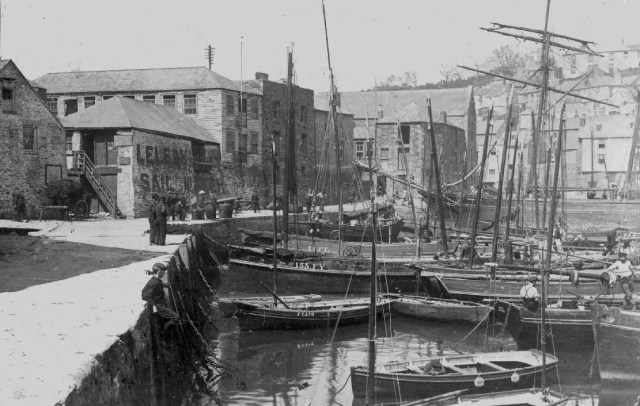
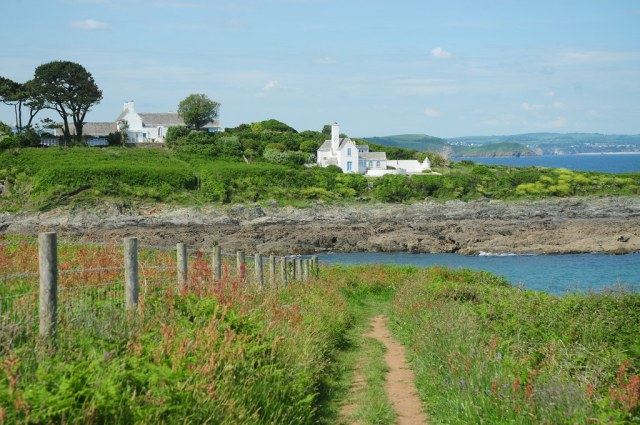
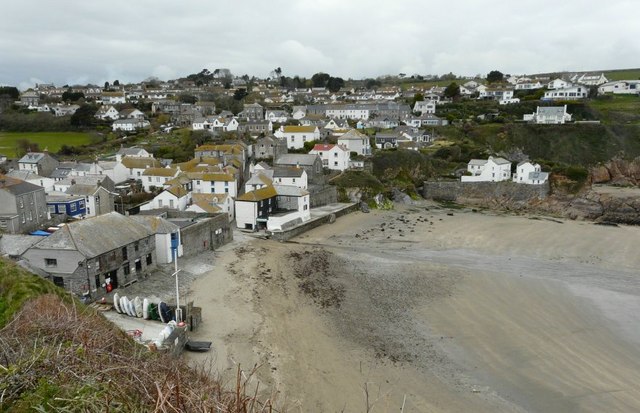

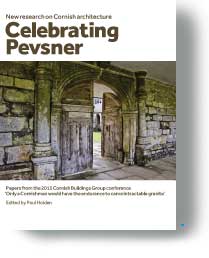 Papers from the 2015 Cornish Buildings Group conference ‘Only a Cornishman would have the endurance to carve intractable granite’
Papers from the 2015 Cornish Buildings Group conference ‘Only a Cornishman would have the endurance to carve intractable granite’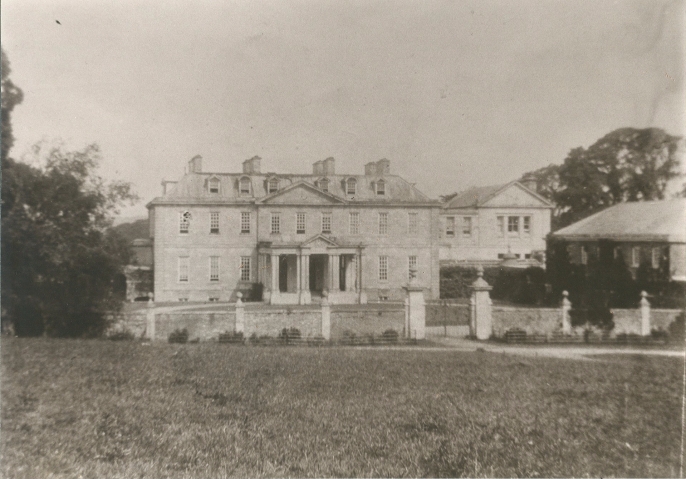
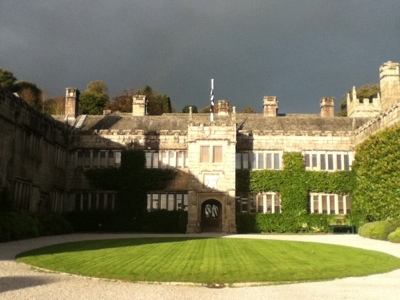 When I was asked to do this talk I was conscious that it wouldn’t be an easy subject to talk about. My reservations were based on a single conceit – namely that in my research I hadn’t encountered much primary source material about the role of the Cornish country house during the Second World War. Also lacking are living memories of wartime requisitioning of the country house and published sources, indeed John Martin Robinson’s landmark book The Country House at War, barely mentions Cornwall. With that in mind, I have extended the remit of this talk beyond the country house to encompass the wider country estate, thereby charting its decline and subsequent rise during the 20th century.
When I was asked to do this talk I was conscious that it wouldn’t be an easy subject to talk about. My reservations were based on a single conceit – namely that in my research I hadn’t encountered much primary source material about the role of the Cornish country house during the Second World War. Also lacking are living memories of wartime requisitioning of the country house and published sources, indeed John Martin Robinson’s landmark book The Country House at War, barely mentions Cornwall. With that in mind, I have extended the remit of this talk beyond the country house to encompass the wider country estate, thereby charting its decline and subsequent rise during the 20th century.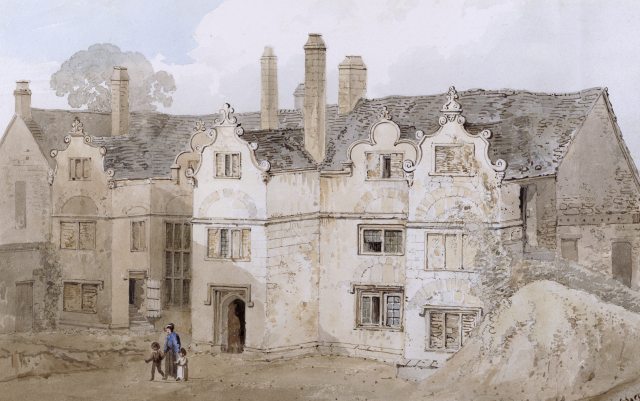
 Samuel Molyneux was born in Chester on 18 July 1689. He was the third and only surviving child of the celebrated astronomer, antiquarian, philosopher and constitutional writer William Molyneux (1656-98) and his wife, Lucy who died when Samuel was only two. William studied at Middle Temple between 1675 and 1678 and once back in Dublin, in 1683, he founded with Sir William Petty the ‘Dublin Philosophical Society for the Improvement of Natural Knowledge, Mathematics and Mechanics’. He was elected a Fellow of the Royal Society in 1685. Through his scientific and published research William attracted friendships with Royal Society notables such as Robert Boyle, Edmond Halley, Robert Hooke, John Locke and Isaac Newton. William and his circle were huge influences on the infant Samuel however, William died aged 42 in 1698 when his only son was 9 years old. Samuel was raised in Dublin by his uncle Thomas Molyneux (1661-1733) who, like his brother William, had studied at Trinity College, Dublin, travelled abroad and was elected a Fellow of the Royal Society.. Thomas later forged a successful career as a physician, being elected a Fellow of the Irish College of Physicians, of which he was elected President in 1713, and later served as Regius Professor of Physic in 1717.
Samuel Molyneux was born in Chester on 18 July 1689. He was the third and only surviving child of the celebrated astronomer, antiquarian, philosopher and constitutional writer William Molyneux (1656-98) and his wife, Lucy who died when Samuel was only two. William studied at Middle Temple between 1675 and 1678 and once back in Dublin, in 1683, he founded with Sir William Petty the ‘Dublin Philosophical Society for the Improvement of Natural Knowledge, Mathematics and Mechanics’. He was elected a Fellow of the Royal Society in 1685. Through his scientific and published research William attracted friendships with Royal Society notables such as Robert Boyle, Edmond Halley, Robert Hooke, John Locke and Isaac Newton. William and his circle were huge influences on the infant Samuel however, William died aged 42 in 1698 when his only son was 9 years old. Samuel was raised in Dublin by his uncle Thomas Molyneux (1661-1733) who, like his brother William, had studied at Trinity College, Dublin, travelled abroad and was elected a Fellow of the Royal Society.. Thomas later forged a successful career as a physician, being elected a Fellow of the Irish College of Physicians, of which he was elected President in 1713, and later served as Regius Professor of Physic in 1717. Growing up I digested every word and image I could. I bought illicit bootlegs, Wembley Wizard, Live in Stockholm, Soft in the Middle, and treasured my 7” copies of Prettiest Star on Mercury Records and Space Oddity on Phillips and coveted my ultra-rare album An Evening with David Bowie. It was the rarity of these vinyl treasures that helped me feel that I owned a little piece of Bowie that no-one else had. A friend of a friend once showed me the very same boots Bowie wore on the reverse cover of Space Oddity. As a 12 year old I slipped the space boots onto my tiny space feet and in hushed tones walked unearthily around the room pretending I was a flame haired androgynous astronaut. Today I still believe they were Bowie’s boots; however part of me suspects that the bastards simply conspired against an impressionable fan to help them pass a quiet Sunday afternoon.
Growing up I digested every word and image I could. I bought illicit bootlegs, Wembley Wizard, Live in Stockholm, Soft in the Middle, and treasured my 7” copies of Prettiest Star on Mercury Records and Space Oddity on Phillips and coveted my ultra-rare album An Evening with David Bowie. It was the rarity of these vinyl treasures that helped me feel that I owned a little piece of Bowie that no-one else had. A friend of a friend once showed me the very same boots Bowie wore on the reverse cover of Space Oddity. As a 12 year old I slipped the space boots onto my tiny space feet and in hushed tones walked unearthily around the room pretending I was a flame haired androgynous astronaut. Today I still believe they were Bowie’s boots; however part of me suspects that the bastards simply conspired against an impressionable fan to help them pass a quiet Sunday afternoon. I bought Blackstar on the day of release. Like all hardened fans I studied the lyrics to within an inch of their lives. He writes about ‘Fool[ing] them again and again’ in Dollar Days while he ‘…know[s] something’s very wrong’ in I Cant Give Everything Away adding ‘skull designs upon my shoes’. I saw the film for Lazarus. I am not ashamed to say that I never read into his last regeneration, in hindsight it is so obvious. If the lyrics were not enough there was the website posting the line ‘Look up here, I’m in heaven’ on Christmas Day 2015, the released promotional image (again from Lazarus) showing a deathly, gazing, Bowie holding a note to camera which read ‘To Jimmy [Fallon]…help Me’ and the fact that his last Twitter follow was God. The clues were there.
I bought Blackstar on the day of release. Like all hardened fans I studied the lyrics to within an inch of their lives. He writes about ‘Fool[ing] them again and again’ in Dollar Days while he ‘…know[s] something’s very wrong’ in I Cant Give Everything Away adding ‘skull designs upon my shoes’. I saw the film for Lazarus. I am not ashamed to say that I never read into his last regeneration, in hindsight it is so obvious. If the lyrics were not enough there was the website posting the line ‘Look up here, I’m in heaven’ on Christmas Day 2015, the released promotional image (again from Lazarus) showing a deathly, gazing, Bowie holding a note to camera which read ‘To Jimmy [Fallon]…help Me’ and the fact that his last Twitter follow was God. The clues were there.